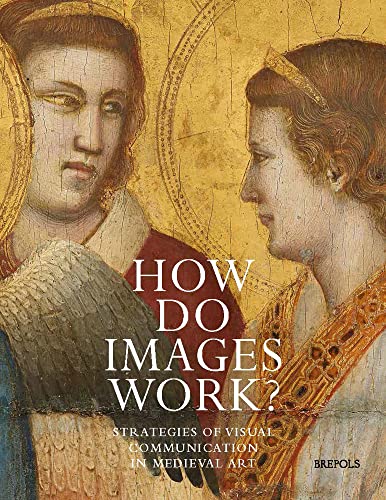T JUCKES; (3 risultati)
Tipo di articolo
- Tutti gli articoli
- Libri (3)
- Riviste e Giornali
- Fumetti
- Spartiti
- Arte, Stampe e Poster
- Fotografie
- Mappe
-
Manoscritti e
Collezionismo cartaceo
Condizioni
Legatura
Ulteriori caratteristiche
- Prima edizione (1)
- Copia autografata
- Sovraccoperta (1)
- Con foto
- No print on demand
Paese del venditore
Valutazione venditore
-
How Do Images Work? Strategies of Visual Communication in Medieval Art.
Editore: Turnhout: Brepols 2020., 2020
Da: Antiquariat Bergische Bücherstube Mewes, Overath, Germania
IV,244 S., 31 s/w . + 140 farb. Abb. 4° Kart. neuwertig, as new*.
-
Parish and Pilgrimage Church of St Elizabeth in Ko'ice. Town, Court, and Architecture in Late Medieval Hungary,
Editore: Turnhout Brepols 2012, 2012
Da: BOOKSELLER - ERIK TONEN BOOKS, Antwerpen, Belgio
Membro dell'associazione: ILAB
Paperback, XII+292 p., 224 b/w ill., 220 x 280 mm. ISBN 9782503531090. One of the most important building projects in late medieval Hungary was the reconstruction of the parish and pilgrimage church of St Elizabeth in Ko'ice (present-day Slovakia). The burghers of this prosperous, free royal town decided to rebuild their main church shortly before 1400, and work continued, with several interruptions, into the late fifteenth century. Along with the ambitious and unusual design that emerged, far-reaching artistic connections with centres such as Prague and Vienna ensure the church's exceptional value for architectural history - not only within Hungary, but in the Central European region as a whole. It is this value as an art historical document that the present work seeks to exploit. It approaches the church's fabric as a source of information about patrons, masons, and congregations, attempting to locate the dynamics behind design choices made. This necessitates a detailed reconstruction of the building enterprise itself, before the focus shifts to the impact of the St Elizabeth's project both in northern Hungary and further afield (Transylvania, Lesser Poland), allowing the town lodge's remarkable achievements be set in inter-regional context. New. 0 g.
-
How Do Images Work? Strategies of Visual Communication in Medieval Art
Editore: Brepols Publishers, Turnhout, 2021
ISBN 10: 2503595871ISBN 13: 9782503595870
Da: Luigi De Bei, PREGANZIOL, TV, Italia
Libro Prima edizione
Rilegato. Condizione: nuovo. Condizione sovraccoperta: nuovo. prima edizione. How Do Images Work? C. Beier, T. Juckes, A. Pinkus (eds.) IV+244 p., 31 b/w ill. + 140 colour ill., 216 x 280 mm, 2021 ISBN: 978-2-503-59587-0 Languages: English, German, Italian Hardback The publication is available. Retail price: EUR 145,00 This anthology examines the workings of historical imagery in fourteen essays, offering fresh perspectives from leading researchers on a wide range of medieval and early modern artworks in a similarly wide range of functional contexts. How did historical images work and interact with their beholders and users? Drawing on the results of an international conference held in Vienna in 2018, this volume offers new perspectives on a central question for contemporary art history. The fourteen authors approach working imagery from the medieval and early modern periods in terms of its production, usage, and reception. They address wide-ranging media?architecture, sculpture, painting, metalwork, stained glass?in similarly wide-ranging contexts: from monumental installations in the most public zones of urban churches to exquisite devotional objects and illuminated books reserved for more exclusive settings. While including research from West European and American institutions, the project also engages with the distinctive scholarly traditions of Eastern Europe and Israel. In all these ways, it reflects the interests of the dedicatee Michael Viktor Schwarz, whose introductory interview lays out the parameters of the subject. Christine Beier is senior scientist at the Department of Art History at Vienna University. Her research focuses on medieval and early modern book illumination. Tim Juckes works at the Department of Art History at Vienna University. He is the main researcher in a project funded by the Austrian Science Fund (FWF) on visual media and spatial contexts in late-medieval Central Europe. Assaf Pinkus is professor of art history at Tel Aviv University. He works on spectatorship, response, and somaticism with a focus on the visual media of late medieval Europe. Table of Contents How Do Images Work? An Interview with Michael Viktor Schwarz Editors? Introduction PART I: VISUAL ELOQUENCE Can We Grasp Wordless Images? ? Milena Bartlová Gothic Art, Realism and magniloquentia: Thoughts on Erich Auerbach ? Paul Binski The Scaling Turn: Experiencing Late Medieval Artifacts? Assaf Pinkus and Einat Klafter ?Where the Wild Things Are?. Die Wilden Leute des späten Mittelalters und der frühen Neuzeit im Raum des Dekorativen ? Hans Körner Das Kultbild und sein Rahmen: Zur Funktion von Stildifferenzen (zwei schlesische Beispiele aus dem Anfang des 16. Jahrhunderts) ? Romuald Kaczmarek PART II: IMAGERY IN BOOKS In cerchio: Illuminating the Trojan Legend and the Commedia between the Veneto and Naples (with some conjectures on Madrid, BNE, MS 10057) ? Rosa M. Rodríguez Porto Wie die Bilder im Roman d?Alexandre en prose die dubiose Herkunft des Helden diskutieren ? Lieselotte E. Saurma-Jeltsch Bonaventure and Monastic Images of St Elizabeth ? Ivan Gerát PART III: IMAGERY IN SPACE In Praise of the Pigeon: Interpretive Adventures in Naumburg Cathedral ? Jacqueline E. Jung Bilder und Kult als Ausdruck bischöflicher Macht: Berthold von Buchegg und die Katharinenkapelle im Straßburger Münster? Marc Carel Schurr Eye of the Donkey: Visual Strategies on the Choir Threshold of St Laurence?s in Nuremberg ? Tim Juckes Bildkonzepte im Widerstreit. Donatellos Judith als ?naturalisierte Allegorie?? Ulrich Pfisterer Inhaltliche Vielfalt durch motivische Zurückhaltung. Zur Wandmalerei in der.



